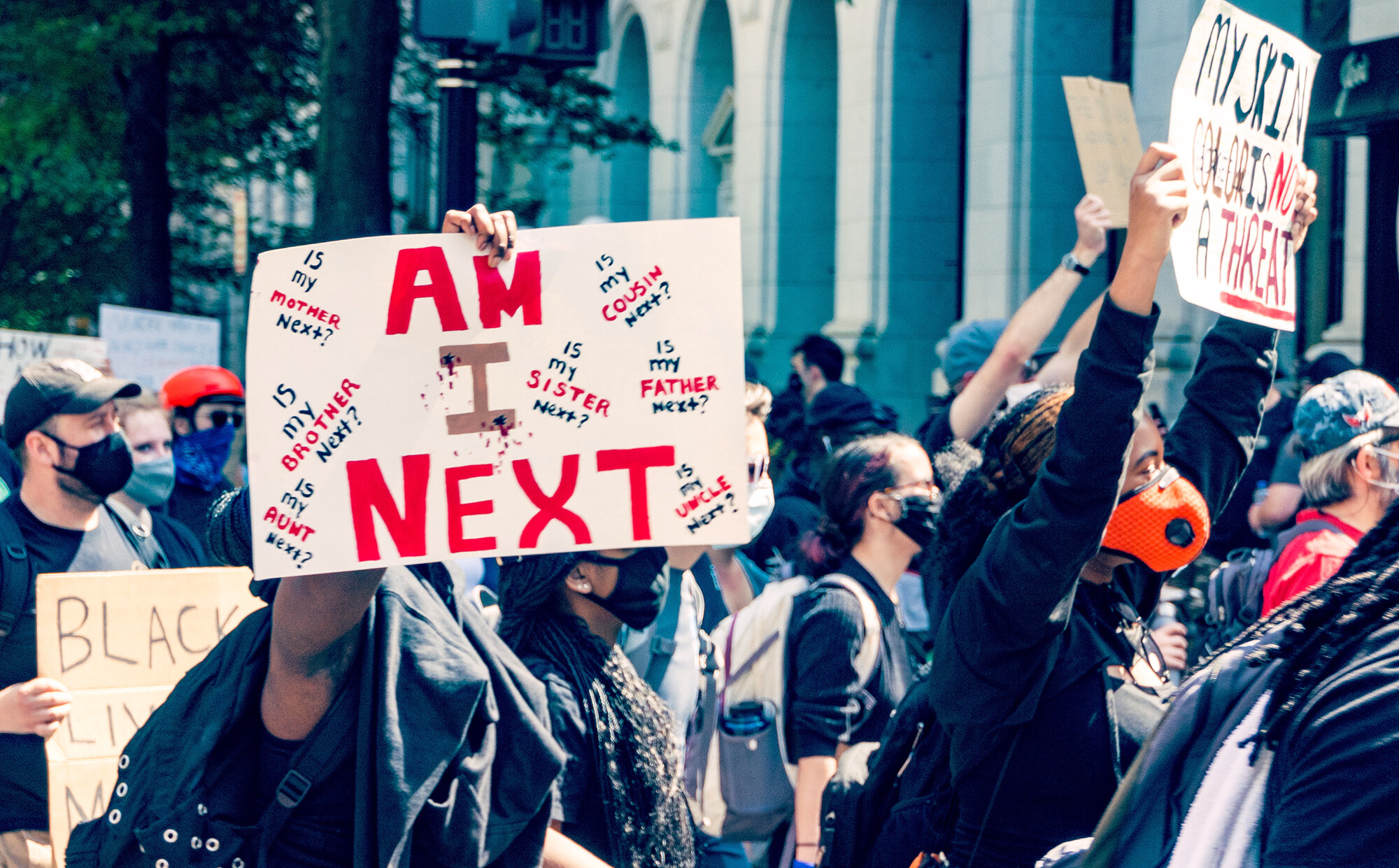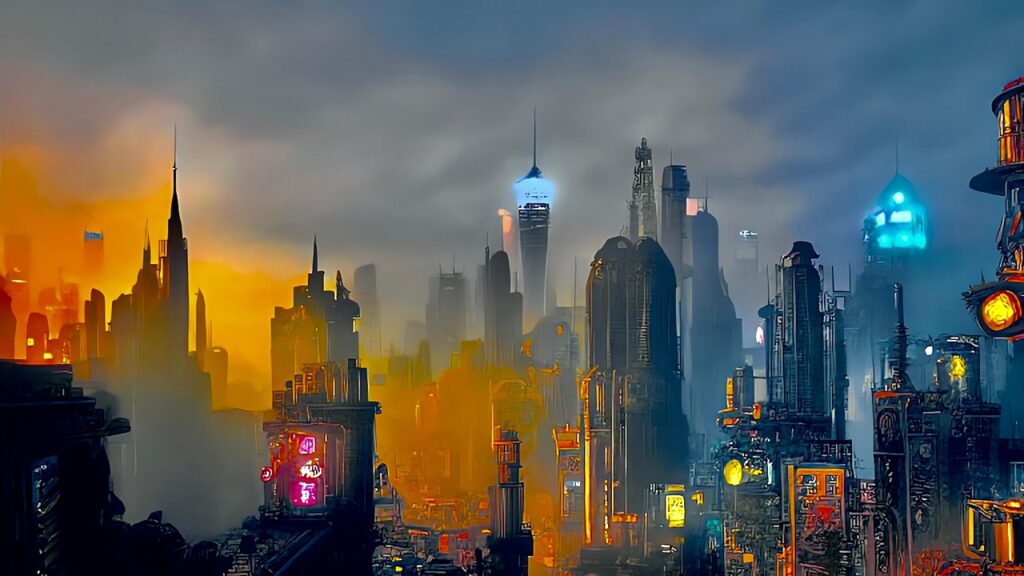
Alright, buckle up, history buffs and nostalgia seekers! When we talk about the 1970s, it’s easy to get lost in the disco beats, the bell bottoms, and the general vibe of a world in transition. But beyond the groovy aesthetics and cultural shifts, the ’70s were a powerhouse decade, a real pivot point of change, as historians in the 21st century increasingly portray it. It was a time when the world population soared from 3.7 to 4.4 billion, and things were *happening*, fast and furious.
This wasn’t just a decade of peace and love, though. Oh no, the ’70s were characterized by frequent coups, domestic conflicts, and a whole lot of political upheaval. The global struggle between NATO, the Warsaw Pact, and the Non-Aligned Movement played out in various armed conflicts across Southeast Asia, the Middle East, Latin America, and Africa. From economic shake-ups to major political dramas, this era threw a lot at the wall, and honestly, some of it just didn’t stick in the way folks hoped.
So, let’s take a wild ride back to the Seventies, but with a critical eye. We’re not here to just marvel at the past; we’re here to unpack some of the most significant moments that, let’s just say, haven’t exactly aged like fine wine. These are the game-changers, the head-scratchers, and the outright tragedies whose long-term fallout still echoes today. Get ready to explore the less-than-glamorous side of a truly unforgettable decade!
1. **The Vietnam War’s Bitter End: A High Price, A Harsh Reality** Remember those early 70s vibes? Well, the United States was still knee-deep in the Vietnam War, and tensions were through the roof. The New York Times, bless its journalistic heart, started leaking classified information about the nation’s involvement, pulling back the curtain on a conflict that had already stretched far too long. It was a turbulent start to the decade, with public opinion increasingly turning against the war.
By 1973, political pressure finally reached a breaking point, leading to America’s official withdrawal from the conflict. But that wasn’t the end of the story for Vietnam. The Fall of Saigon in 1975 marked the unconditional surrender of South Vietnam, and the subsequent evacuations of South Vietnamese citizens painted a stark picture of a war lost. The following year, Vietnam was officially declared reunited, but the scars, both physical and psychological, ran incredibly deep.
The cost of the Vietnam War, which officially concluded in 1975, was immense, not just in lives lost but in the profound impact it had on American society and global perceptions. What began with intentions to contain communism ended in a complex, painful defeat that challenged the very fabric of national confidence and trust in government. It was a prolonged, divisive struggle that truly didn’t age well, leaving a legacy of skepticism and a reevaluation of foreign policy.
The sheer scale of the conflict’s human toll and the lasting trauma for all involved are testaments to how quickly grand strategies can unravel. The idealism that might have fueled early involvement had, by the 1970s, dissolved into a grim determination to simply extricate forces. The ultimate outcome was a stark reminder of the limitations of military power and the complexities of international intervention.

2. **Watergate and the Stain on American Democracy** Speaking of challenges to national confidence, who could forget the Watergate scandal? This was a real nail-biter that captivated the nation, eventually leading to a seismic shift in American politics. The whole affair involved allegations of high-level misconduct and obstruction of justice, unraveling slowly and dramatically throughout the early to mid-70s.
The scandal eventually reached the highest office in the land. United States President Richard Nixon, facing charges for impeachment, ultimately resigned on August 9, 1974. It was an unprecedented moment in American history, marking the first time a U.S. president had stepped down from office. The image of Nixon displaying the V-for-victory sign as he departed the White House became an iconic, if bittersweet, symbol of the era.
The Watergate scandal didn’t just bring down a president; it chipped away at public trust in government institutions. The revelations of abuse of power, covert operations, and attempts to cover up wrongdoing created a deep sense of cynicism that lingered for decades. It fundamentally altered the relationship between the press, the public, and the presidency, fostering a new era of scrutiny and skepticism.
What was once seen as a robust, almost untouchable political system was exposed as vulnerable to corruption and hubris. The promises of transparency and accountability suddenly felt hollow. It was a harsh lesson in democracy’s fragility and the importance of checks and balances, proving that even the most powerful can fall. This was a chapter that definitely didn’t age well for the image of American political integrity.
Read more about: Remember the ’70s? 12 Wild Events and Trends That Were SO Everywhere, They Practically Lived in Our Living Rooms!

3. **The 1973 Oil Crisis: A Jolt to the Global Economy** Talk about a global ripple effect! The 1973 oil crisis hit industrialized countries like a ton of bricks, sparking a widespread economic recession. This wasn’t just a bump in the road; it was a fundamental shake-up caused by oil embargoes imposed by the Organization of Arab Petroleum Exporting Countries (OPEC). Suddenly, the world realized just how dependent it was on this precious commodity.
The crisis led to the first instance of “stagflation” – a grim combination of economic stagnation and high inflation – which threw traditional economic theories for a loop. It kickstarted a major political and economic trend, signaling the beginning of the replacement of Keynesian economic theory with neoliberal economic theory. This wasn’t just academic; it meant real changes in how governments approached economic management, with long-term consequences for workers and markets alike.
The economic aftershocks were felt worldwide, changing everything from how people commuted to how industries operated. It underscored the interdependence of global economies and highlighted vulnerabilities that had previously been overlooked. The era of cheap, abundant energy seemed to be drawing to a close, forcing a reevaluation of resource management and international trade relations.
For many, the energy crisis of the 70s created a sense of instability and uncertainty. The economic prosperity that many had taken for granted since World War II suddenly felt precarious. While it forced innovation in some areas, the sheer disruption and the shift towards less regulated markets have certainly had a mixed legacy, prompting ongoing debates about economic policy and resource security. This economic bombshell undeniably didn’t age well for global stability and growth.

4. **Cambodia’s Tragic Descent: The Khmer Rouge Reign of Terror** Sometimes, history takes a truly dark turn, and the rise of the Khmer Rouge in Cambodia is a chilling example. In 1975, after years of civil war, the communist leader Pol Pot led a revolution against the American-backed government. On April 17, 1975, his forces swept into Phnom Penh, the capital, signaling a horrifying new chapter for the nation.
What followed was a brutal, radical experiment to establish a Marxist agrarian society. The Khmer Rouge, under Pol Pot’s iron fist, forced entire populations out of cities into the countryside to clear jungles and work communal farms. This wasn’t just about forced labor; it was a systematic dismantling of Cambodian society, targeting anyone perceived as an intellectual or a threat to their ideology.
Buddhist priests and monks, individuals who spoke foreign languages, anyone with an education, or even people who wore glasses were tortured or killed. The scale of the atrocities was staggering. As many as 3 million people may have died between 1975 and 1979 in what became known as the Cambodian genocide. It was a period of unimaginable suffering, driven by an extremist vision.
The horrors committed by the Khmer Rouge are a grim reminder of the destructive power of totalitarian regimes and unchecked ideological fervor. The initial revolutionary rhetoric quickly devolved into mass murder and cultural destruction. Vietnam eventually invaded in early 1979, overthrowing the Khmer Rouge, but the damage was already done, leaving deep wounds and a generation forever marked by tragedy. This, without a doubt, is one of the darkest chapters of the 70s that emphatically did not age well.

5. **Idi Amin’s Brutal Rule in Uganda: A Dictatorship Unchecked** The 1970s wasn’t just about geopolitical chess; it was also a period rife with authoritarian regimes, and few were as infamous as Idi Amin’s in Uganda. Rising to power in a military coup in 1971, Amin quickly solidified his control and embarked on a brutal, eight-year dictatorship that left an indelible stain on East African history.
Amin’s regime was a terrifying display of unchecked power. He became notorious for his relentless persecution of any opposition to his rule, silencing critics through violence and intimidation. Beyond political repression, Amin also pursued a racist agenda, most notably orchestrating the removal of Asians, particularly Indians who had settled in Uganda during British colonial rule. This forced expulsion had devastating economic and social consequences for the country.
His expansionist ambitions further plunged the region into conflict. In 1978, Amin initiated the Ugandan–Tanzanian War, allying with Libya in a bid to annex territory from Tanzania. This ill-fated endeavor ultimately led to Uganda’s defeat and, finally, Amin’s overthrow in 1979, bringing an end to a reign characterized by extreme brutality and human rights abuses.
The story of Idi Amin is a stark reminder of the dangers of dictatorial power and the devastating impact it can have on a nation and its people. His rise to power and prolonged reign of terror exemplify a grim trend of military coups and civil strife that plagued parts of Africa during the decade. This particular chapter in 1970s history undoubtedly did not age well, serving as a cautionary tale of tyranny’s dark grip.
Read more about: From the Headlines to History Books: 13 ’70s Figures Whose Legacies Took Wildly Unexpected Turns!

6. **Yugoslavia’s Cracks: The 1974 Constitution and Rising Ethnic Tensions** Even in seemingly stable nations, the 1970s was a time of internal shifts that would have far-reaching, and ultimately tragic, consequences. Take Yugoslavia, for instance. Growing internal tensions, particularly with the Croatian Spring movement in 1971, demanded greater decentralization of power to the constituent republics, showcasing a desire for more autonomy within the socialist federation.
Yugoslavia’s communist ruler, Joseph Broz Tito, managed to subdue the Croatian Spring movement, even arresting its leaders. However, he also recognized the need for change and initiated major constitutional reform, which culminated in the 1974 Constitution. This new framework decentralized powers to the republics, granting them the official right to separate from Yugoslavia and, importantly, weakening the influence of Serbia, the largest and most populous republic, by giving significant powers to its autonomous provinces of Kosovo and Vojvodina.
While seemingly a step towards greater equality and autonomy, the 1974 Constitution had a flip side. It also consolidated Tito’s dictatorship by proclaiming him president-for-life. More critically for the future, the provisions that weakened Serbia’s influence and granted republics the right to secede became deeply resented by Serbs. This resentment wasn’t just a minor grievance; it began a gradual escalation of ethnic tensions that would fester for years.
Looking back, the 1974 Constitution, intended to manage internal pressures, inadvertently laid some of the groundwork for future conflicts. The delicate balance it tried to strike ultimately fractured, contributing to the tragic and violent dissolution of Yugoslavia in subsequent decades. It’s a perfect example of a political solution that, despite its immediate intent, ultimately didn’t age well at all, unraveling into profound instability and warfare.
Alright, we’ve just scratched the surface of the wild and sometimes wonderfully weird 70s, diving into some major global shake-ups that left us thinking, “Yikes, maybe not the best look.” But hold onto your platform shoes, because this decade had even more twists and turns, more moments that reshaped our world in ways we’ve been grappling with ever since. From heartbreaking humanitarian crises to seismic shifts in power, the 70s really were a rollercoaster.
We’re not done with our critical deep dive! Let’s keep exploring six more impactful events that truly defined this era, proving that sometimes, even with the best intentions, things just don’t age as gracefully as a vintage vinyl record. Get ready for another round of historical revelations that continue to spark conversations and critical reflection even today.
7. **The Bangladesh Liberation War and Genocide: A Brutal Birth of a Nation** While the world was getting down to disco, a truly horrific humanitarian crisis was unfolding in South Asia. In 1971, East Pakistan, which is now Bangladesh, was yearning for independence from West Pakistan. Instead of dialogue, the Pakistan Armed Forces launched a brutal crackdown to curb these movements, leading to one of the most devastating genocides in recent history. It was a dark moment, often overshadowed by other global events, but its impact was immense.
The sheer scale of the violence is truly staggering. Historians estimate that between 300,000 and 3,000,000 people were killed. Imagine the terror, the loss, the unimaginable suffering experienced by millions. This wasn’t just a conflict; it was a systematic attempt to suppress a people’s desire for self-determination through extreme brutality. The world watched, perhaps not always with the urgency it deserved, as a nation bled for its freedom.
The humanitarian tragedy quickly escalated into the Bangladesh Liberation War. India eventually intervened, siding with East Pakistan, which ultimately led to the creation of an independent Bangladesh. While a new nation was born, the scars of the genocide ran incredibly deep, leaving a legacy of trauma and unresolved grief. It truly makes you wonder about the cost of freedom and the capacity for human cruelty.
This entire episode is a stark reminder of how quickly political tensions can devolve into mass atrocities. The violence, the displacement, and the immense human cost are hard to reconcile with any notion of progress or stability in the 70s. It’s a chapter that definitely didn’t age well, serving as a powerful, somber lesson in the devastating consequences of nationalistic suppression and unchecked military power.
Read more about: 12 Defining ’70s Moments That Shaped Our World (And What Vanished Along The Way!)

8. **The 1970 Bhola Cyclone: Nature’s Wrath and Human Vulnerability** Before the decade truly got into its swing, a natural disaster of epic proportions struck in November 1970, revealing the fragility of human life against the raw power of nature. The 1970 Bhola cyclone, a tropical cyclone packing winds of 120 mph, slammed into the densely populated Ganges Delta region of East Pakistan, now Bangladesh. It wasn’t just another storm; it became the deadliest tropical cyclone in world history.
The death toll from this catastrophic event is almost unfathomable. An estimated 500,000 people lost their lives. Half a million souls swept away by the wind and waves. It was a humanitarian tragedy on a scale that is hard to comprehend, highlighting the severe vulnerability of coastal communities in developing nations to extreme weather phenomena. The sheer number of fatalities is a chilling statistic that truly puts things into perspective.
The aftermath of the cyclone further exposed critical issues beyond the immediate devastation. The response, or lack thereof, from the then-West Pakistani government was widely criticized, exacerbating existing political tensions between East and West Pakistan. This tragedy, therefore, didn’t just showcase nature’s fury; it also underscored profound governance failures and contributed to the sense of grievance that fueled the independence movement.
While natural disasters are, by definition, uncontrollable, the immense loss of life and the socio-political fallout from the Bhola cyclone illustrate a stark reality. It’s a sobering reminder that even in a decade of political maneuvering and cultural shifts, the raw forces of the planet, coupled with inadequate infrastructure and strained political relations, can unleash devastation that truly doesn’t age well in our collective memory.

9. **The Iranian Revolution: A Seismic Shift in the Middle East** As the 1970s drew to a close, a monumental event unfolded in Iran that would send shockwaves across the globe and redefine Middle Eastern politics: the Iranian Revolution of 1979. This wasn’t just a change of leadership; it was a fundamental transformation, overthrowing the autocratic pro-Western monarchy of Shah Mohammad Reza Pahlavi and replacing it with a theocratic Islamist government. Talk about a dramatic exit for one era and an intense entrance for another!
The revolution, led by Ayatollah Ruhollah Khomeini, was fueled by a complex mix of anti-Western sentiment, religious fervor, and discontent with the Shah’s authoritarian rule. It signaled a powerful rejection of Western influence and a reassertion of Islamic identity. This wasn’t just local news; it dramatically altered global attitudes toward and among those of the Muslim faith, setting a new course for regional and international relations.
The immediate aftermath was intense. Distrust between the new revolutionary government and Western powers escalated quickly, leading to the infamous Iran hostage crisis on November 4, 1979. American diplomats were held captive for a staggering 444 days, a diplomatic standoff that highlighted the deep ideological chasm that had opened up. It was a gripping real-life drama with profound implications for international diplomacy and security.
The Iranian Revolution’s legacy is vast and multifaceted. It ushered in an era of Islamic fundamentalism, established a unique form of governance, and profoundly influenced regional conflicts, including the devastating Iran-Iraq War in the 1980s. This event undoubtedly didn’t age well for many in the international community, reshaping geopolitical landscapes and continuing to influence global energy markets and security discussions today. It’s a potent example of how deeply rooted societal changes can create long-lasting, complex challenges.
Read more about: 12 Defining ’70s Moments That Shaped Our World (And What Vanished Along The Way!)

10. **The Yom Kippur War and Camp David Accords: A Rollercoaster in the Middle East** The Middle East in the 1970s was anything but quiet, experiencing both intense conflict and surprising steps towards peace. October 1973 saw the outbreak of the Yom Kippur War, launched by Egypt and Syria against Israel to reclaim territories lost in the 1967 conflict. It was a sudden, coordinated attack that caught Israel by surprise, leading to heavy initial losses. The intensity of this conflict was a stark reminder of unresolved regional tensions.
The war quickly became a dramatic struggle, with Israeli forces eventually rallying to repel the attacks and even crossing the Suez Canal into Egypt proper. The conflict was brief but brutal, and its aftermath underscored the urgent need for a lasting resolution in the region. It highlighted the cycle of violence and retaliation that had plagued the Middle East for decades, pushing diplomatic efforts to the forefront.
Amidst the ongoing tensions, a glimmer of hope emerged later in the decade. In a monumental diplomatic breakthrough, Egypt signed a peace treaty with Israel at Camp David in the United States in 1978. This landmark agreement, known as the Camp David Accords, fundamentally altered the situation, ending outstanding disputes between the two countries and earning Egyptian President Anwar Sadat and Israeli Prime Minister Menachem Begin the Nobel Peace Prize.
While the Camp David Accords were a huge step forward for peace between two major regional players, the broader Arab-Israeli conflict continued, and Sadat’s actions led to his assassination in 1981. This complex narrative of war and peace, significant breakthroughs alongside enduring challenges, certainly showcases how the hopes and setbacks of the 70s continue to resonate. It’s a mixed bag of aging, with some parts shining brightly and others remaining deeply troubled.

11. **The Soviet Invasion of Afghanistan: The End of Détente and a New Cold War Front** Just as the 1970s were winding down, the geopolitical chessboard saw a major, dramatic move that completely reshaped superpower relations. On December 27, 1979, the Soviet Union invaded Afghanistan, kicking off what would become a brutal, decade-long conflict. This wasn’t just a regional spat; it was a direct challenge to the fragile policy of détente, which had sought to lessen tensions between the US and the Soviet Union throughout much of the 70s.
The invasion was a huge deal because it marked a clear end to the perceived cooling of relations between the two global giants. For the United States and its allies, it was seen as a blatant act of Soviet expansionism, and it immediately ratcheted up Cold War tensions to levels not seen in years. Suddenly, the idea that world problems could be resolved at the negotiating table felt like a distant dream.
This intervention had far-reaching and devastating consequences. It plunged Afghanistan into a protracted war that would destabilize the region for decades. The Soviet Union found itself embroiled in a costly and ultimately unwinnable conflict, often compared to America’s experience in Vietnam. The human toll was immense, and the political and economic drain on the Soviet system was a significant factor in its eventual collapse.
The Soviet-Afghan War, though primarily fought in the 80s, began with a bang in 1979 and stands as a grim testament to grand strategic blunders. It undeniably didn’t age well, for the Soviet Union or for the people of Afghanistan. It ignited a new front in the Cold War, fueled the rise of extremist groups, and left a lasting legacy of instability and conflict that continues to plague the region today. What a way to close out the decade!
12. **The Jonestown Massacre: A Utopian Dream Turned Horrific Nightmare** The 1970s, for all its idealism and social change, also bore witness to some truly horrifying humanitarian tragedies, one of the most chilling being the Jonestown Massacre in November 1978. In a remote commune in the Guyanese jungle, the Rev. Jim Jones had led several hundred followers from his People’s Temple, envisioning a Utopian Marxist society. What transpired there, however, was anything but utopian.
The reality of Jonestown was a dark tale of corruption, mental, sexual, and physical abuse, and followers being denied the right to leave. When a U.S. Congressional committee and journalists visited to investigate these grave allegations, tragedy struck. Visitors and some defectors attempting to leave were attacked and shot by Jones’s guards at the airport, resulting in the death of Congressman Leo Ryan, among others. It was an appalling act of violence that shattered any illusion of peace.
In the wake of this horrifying incident, the demented Jim Jones ordered everyone in the commune to kill themselves. In a chilling act of mass murder-suicide, over 900 people, approximately one-third of whom were children, died after drinking, or being forced to drink, cyanide-laced fruit punch. Jones himself died of a gunshot wound. The sheer scale of this loss of life, orchestrated by one man, remains one of the most shocking events in modern history.
The Jonestown Massacre is a profoundly disturbing example of the dangers of cults, unchecked power, and extremist ideologies. The cost of the recovery operation alone was millions, but the human cost was immeasurable. It didn’t age well at all, leaving a permanent stain on the 70s and serving as a powerful, agonizing cautionary tale about charisma, control, and the catastrophic consequences when hope twists into delusion. It reminds us to always question, to always protect the vulnerable, and to never let such a tragedy fade from our collective memory.
And there you have it, folks – a deep dive into 12 events from the 1970s that really make you stop and think. This wasn’t just a decade of groovy tunes and questionable fashion choices; it was a crucible of change, a time when global powers clashed, new nations were forged in fire, and humanitarian crises unfolded on scales both grand and tragically intimate. From the ashes of war to the promises of peace, from economic jolts to societal upheavals, the 70s certainly left us with a lot to unpack. While some moments offered glimmers of progress, many of these stories serve as powerful, often painful, reminders of lessons learned the hard way. So, next time you hear a ’70s song, remember: there was a whole lot more going on than just disco fever!






